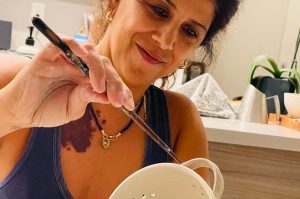Thanksgiving is one of my favorite holidays because it is a day to gather with friends and family and break bread without the pressure of having to buy gifts. As a former history teacher I always wondered what the first Thanksgiving was like. So, for this article I did a little research to find out how this American tradition started and what the first Thanksgiving was really like.
International Frat Party
The first Thanksgiving in 1621 at Plymouth Colony was a meeting between a brotherhood of English men and a brotherhood of Native American men. They were meeting to celebrate a good harvest and to an alliance amongst their nations. Being that the representatives were from different nations and were all men, the First Thanksgiving was an International Frat Party, perhaps the first in English America.

Work Hard, Play Hard
The first Thanksgiving was a fest of feasting that lasted three days. Pilgrim and Indian alike wanted to “rejoice together after we had gathered the fruit of our labors” (Edward Winslow, 1621). Many of the attendants had to travel from far away so leaving the same day was not customary. Instead they stayed a while and rewarded their hard work with some well deserved play time.
Where the Ladies At?
The first Thanksgiving was not a family gathering like we have today. It was a political meeting and a harvest celebration. Without the Wampanoags it is likely the Pilgrims would not have been celebrating at all. The Pilgrims had scarcely survived their first fall in the New World so a celebration was in order. Leaders, mostly men, from both nations were in attendance.

There were women there too, but only four English women, no Native American women. These four English women were were the only ones that survived the first year in the colony. Nevertheless, their function was primarily to attend the men at the party.
The Food Was Fowl
There is no doubt the food was fowl. Winslow relates that four English men that were sent out on a hunting party brought back lots of fowl which they ate during the three days of celebration. The Pilgrims had turkey stored for the winter but it is unclear whether it was consumed at the First Thanksgiving. But food wasn’t just fowl!

The Wampanoag brought venison which they presented as a gift to the English. They also ate seafood that was available locally such as clams, eels, lobsters, mussels and cod and vegetables such as onions, turnips, spinach, carrots and pumpkin.
Bye-Bye Miss American Pie
Let them eat pie! Said no one at the First Thanksgiving. While they had the pumpkin they did not have any of the other accoutrements such as an oven or ingredients such as flour with which to make pie. So bye-bye Miss American Pie, she was nowhere to be seen at the First Thanksgiving.
All That Meat and No Potatoes
If they knew what they were missing, they might have been singing the blues like Louis Armstrong in his song “All that Meat and No Potatoes”. But the white potato and the sweet potato had not yet ventured north from South America and the Caribbean respectively, so the colonists and the Wampanoags had no idea what they were missing.

According to Linda Coombs, director of the Wampanoag Center for Bicultural History they probably ate “sobaheg,” a Wampanoag version of stuffing made up of corn, roots, beans, squash and various meats.
Giving Thanks
So the First Thanksgiving was quite different from the Thanksgiving dinner we celebrate today. But the essence of gathering and giving thanks is still alive and well and for that I am very thankful. I hope that you are too and that you and your family have a wonderful Thanksgiving together.


















